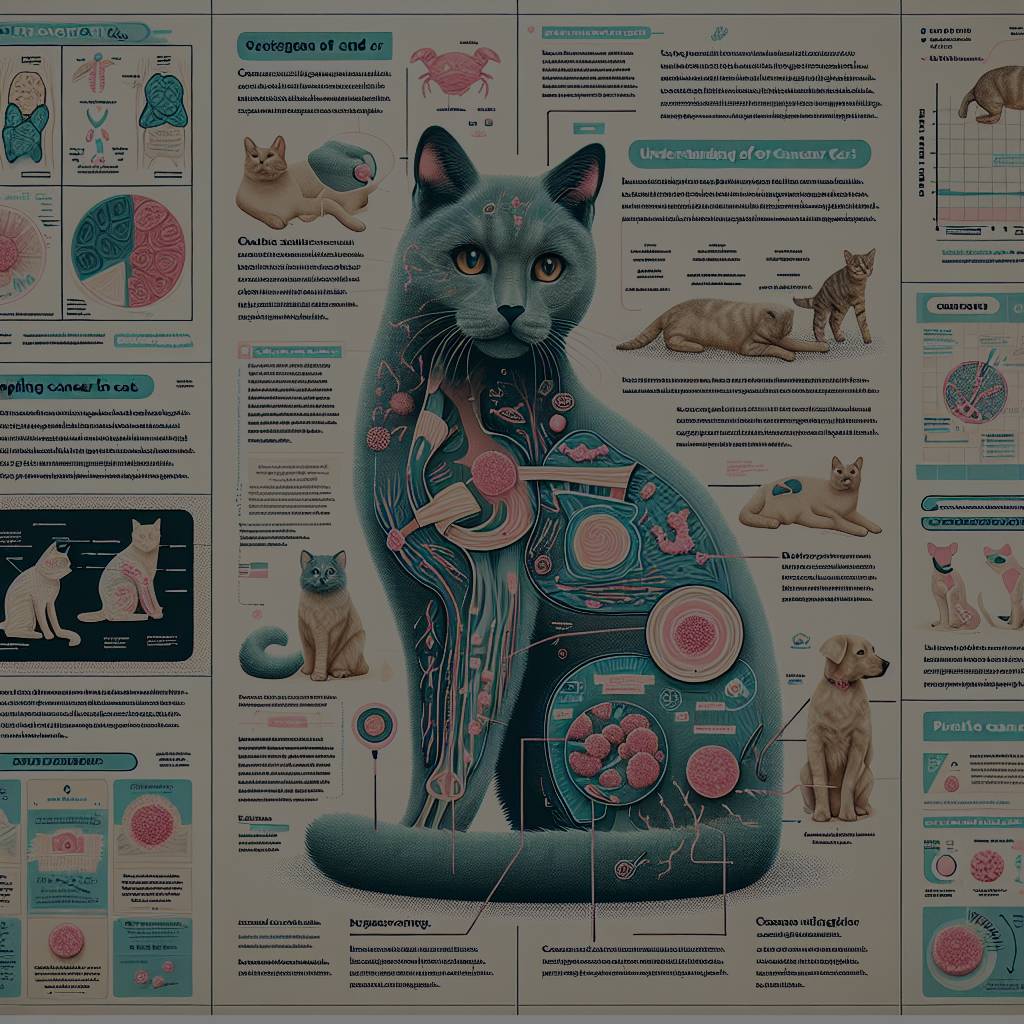
Exploring the Complexities of Cancer in Felines===
Cancer is a complex and devastating disease that affects not only humans but also our beloved feline companions. Feline oncology, the study of cancer in cats, seeks to understand the types, causes, and diagnosis of this disease in order to provide effective treatments and improve the quality of life for these furry friends. With a deeper understanding of feline oncology, veterinarians and pet owners can work together to detect and manage cancer in cats at an early stage, potentially increasing the chances of successful treatment and long-term survival.
===Types, Causes, and Diagnosis: Unraveling the Mysteries of Feline Oncology===
Cancer in cats comes in various types, each with its own unique characteristics and behavior. The most common types of feline cancer include lymphoma, mammary gland tumors, squamous cell carcinoma, and fibrosarcoma. Lymphoma, also known as lymphosarcoma, is a widespread cancer that affects the lymphoid tissues and can occur in various organs, such as the intestines, liver, and kidneys. Mammary gland tumors are predominantly found in female cats and are often associated with hormones. Squamous cell carcinoma is a type of skin cancer that typically affects the ears, nose, or mouth, while fibrosarcoma is a malignant tumor originating from fibrous tissues.
The underlying causes of feline cancer are still not fully understood, but several risk factors have been identified. Exposure to certain carcinogens, such as tobacco smoke, asbestos, and certain chemicals, may increase the risk of developing cancer in cats. Additionally, advanced age, genetic predisposition, weak immune system, and certain viral infections, such as feline leukemia virus (FeLV) and feline immunodeficiency virus (FIV), have also been associated with an increased risk of feline cancer.
Diagnosing cancer in cats can be challenging, as the symptoms can be vague or easily mistaken for other conditions. Common signs of feline cancer include unexplained weight loss, decreased appetite, lethargy, abnormal swelling or lumps, difficulty breathing, changes in bathroom habits, and persistent wounds that do not heal. To diagnose feline cancer, veterinarians may perform thorough physical examinations, blood tests, imaging tests such as X-rays or ultrasounds, and in some cases, conduct biopsies or aspiration of fluid from abnormal masses. Early detection through regular check-ups and prompt investigation of concerning symptoms is crucial for a more accurate diagnosis and better treatment outcomes.
===
Understanding the complexities of cancer in cats is vital in order to provide the best possible care and increase the chances of successful treatment. Feline oncology continues to evolve as researchers uncover new insights into the types, causes, and diagnosis of cancer in cats. By staying informed and working closely with veterinarians, cat owners can help detect cancer early on, explore appropriate treatment options, and provide the necessary support and care to ensure the well-being of their beloved feline companions. With ongoing advancements in feline oncology, there is hope for improved treatments and increased survival rates, bringing comfort to both cats and their devoted owners.
Certainly! Here’s an SEO-friendly paragraph with embedded Wikipedia links related to the topic of feline oncology: — **You might be interested in** other aspects of feline health and cancer research. Speaking of **cancer**, you might be interested in exploring the [types of cancer](https://en.wikipedia.org/wiki/Cancer) and how they affect not just humans but also animals via this comprehensive overview on [oncology](https://en.wikipedia.org/wiki/Oncology). Understanding how genetic factors contribute to cancer can be quite enlightening, and you can dive deeper into [genetic predisposition](https://en.wikipedia.org/wiki/Genetic_predisposition) for more insights. Awareness about viral infections is crucial for cat health; check out detailed information on [Feline Leukemia Virus (FeLV)](https://en.wikipedia.org/wiki/Feline_leukemia_virus) and [Feline Immunodeficiency Virus (FIV)](https://en.wikipedia.org/wiki/Feline_immunodeficiency_virus). Finally, for those concerned about environmental factors, understanding the risks associated with [carcinogens](https://en.wikipedia.org/wiki/Carcinogen) such as tobacco smoke and asbestos can be pivotal in creating a safer environment for your feline friends. — Feel free to tweak it further to better match your blog’s tone or style!










